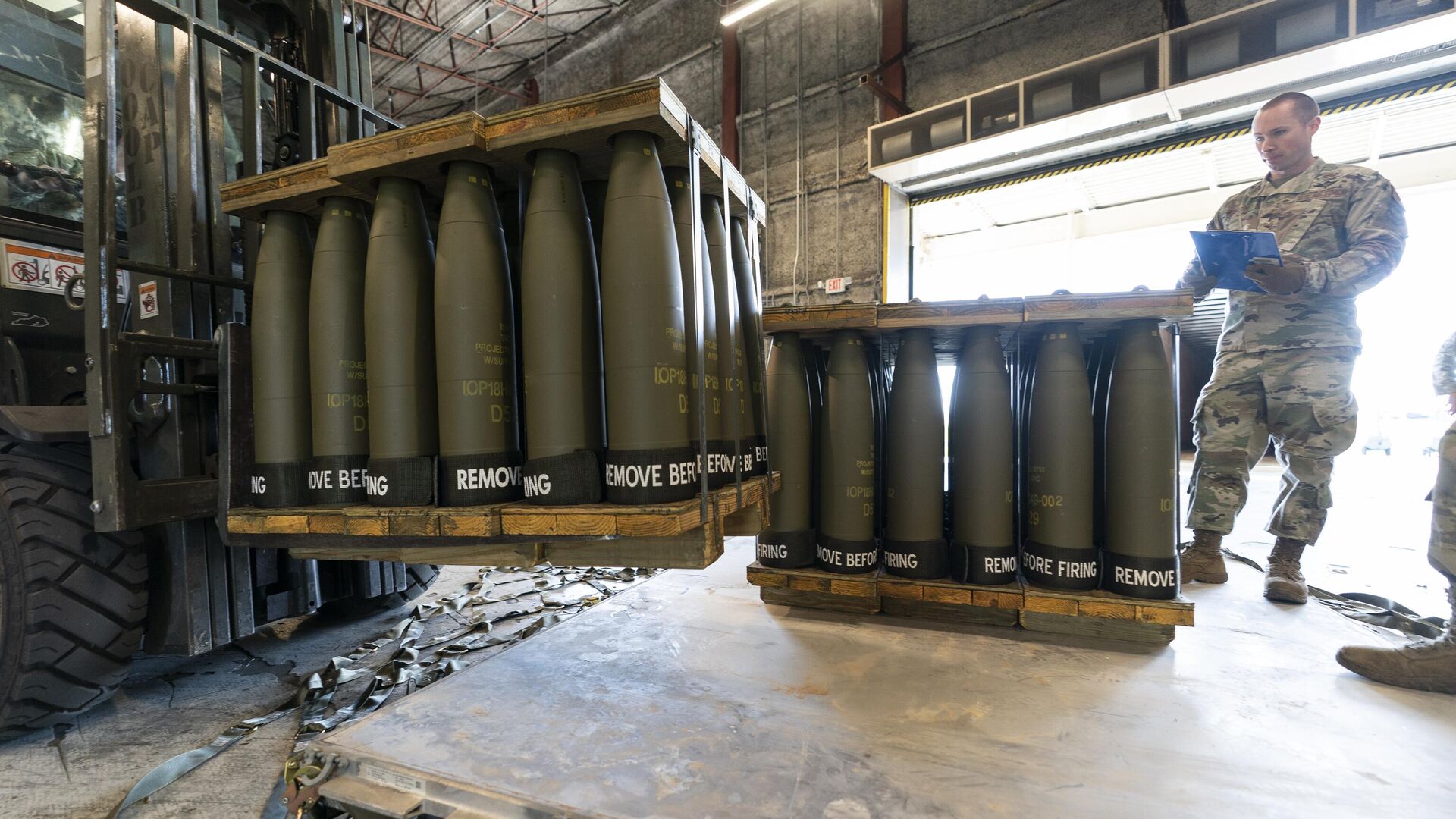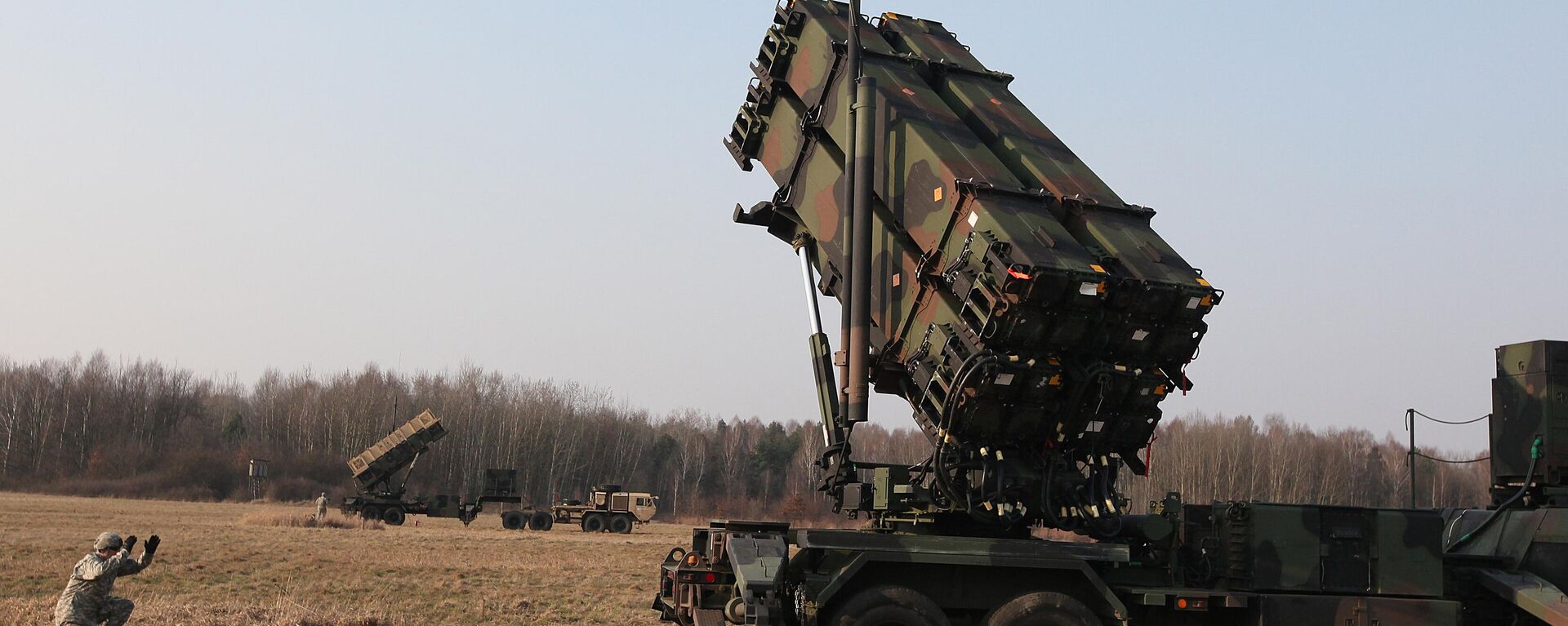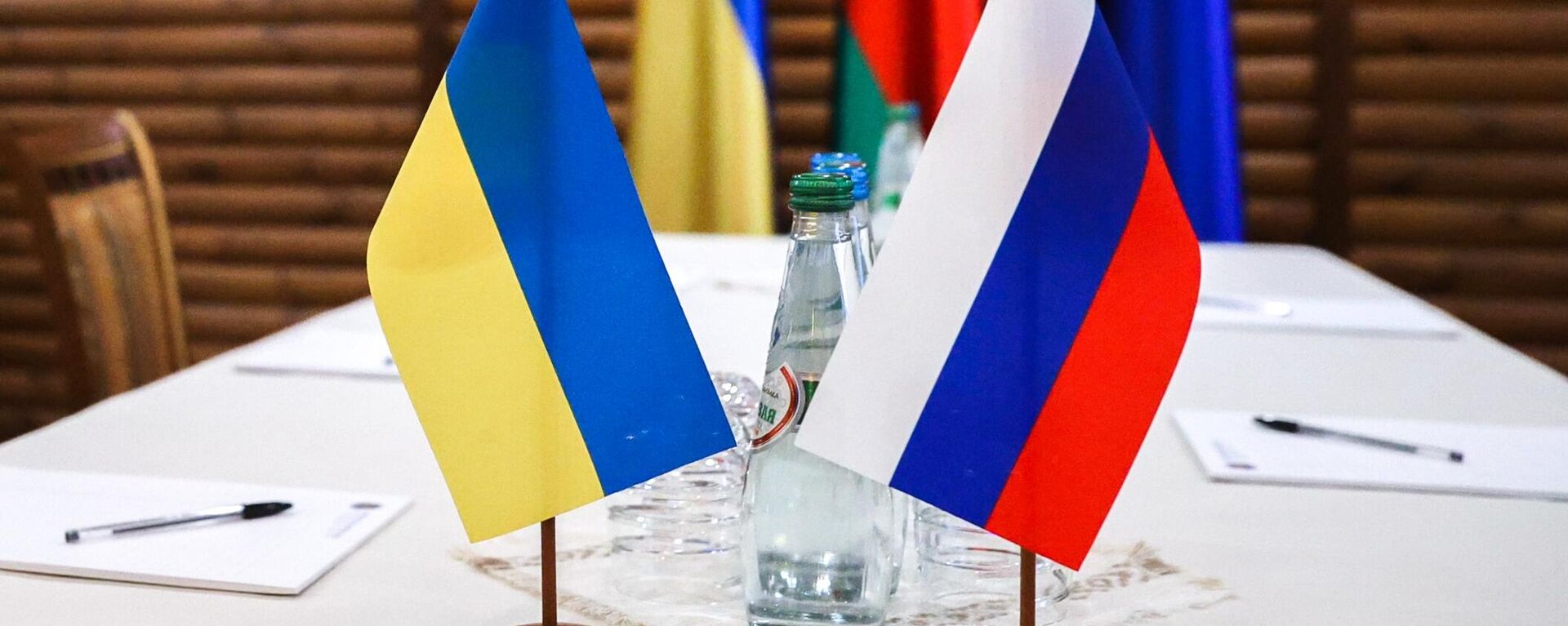https://sputnikglobe.com/20240314/pentagons-300-mln-mini-bailout-for-ukraine-will-run-out-in-matter-of-weeks-1117336759.html
Pentagon’s $300 Mln Mini-Bailout for Ukraine Will Run Out in ‘Matter of Weeks’
Pentagon’s $300 Mln Mini-Bailout for Ukraine Will Run Out in ‘Matter of Weeks’
Sputnik International
White House National Security Advisor Jake Sullivan announced a $300 million emergency security assistance package for Ukraine on Tuesday, claiming the aid had been made possible thanks to “unanticipated cost savings” in DoD contracts to replace equipment previously sent to Kiev. A much larger, $61 billion arms package remains stalled in Congress.
2024-03-14T18:55+0000
2024-03-14T18:55+0000
2024-03-14T18:55+0000
russia's special operation in ukraine
jake sullivan
vladimir putin
us
ukraine
russia
kiev
nato
pentagon
european union (eu)
https://cdn1.img.sputnikglobe.com/img/07e8/02/18/1116949017_0:160:3072:1888_1920x0_80_0_0_458d64f90aabdab85226f2b5b79fbe7e.jpg
Ukraine’s military will burn through the US’s latest aid package in weeks, and “go on losing ground” as NATO’s resolve to continue fueling the proxy war against Russia falters. Furthermore, the new weapons package won’t change the situation on the battlefield.That’s according to a report by the New York Times citing officials and analysts monitoring the situation on the ground. The $300 million aid package, made possible thanks to supposed “cost savings,” isn’t the first time Washington has resorted to the use of creative accounting practices to pump more aid than has been approved by Congress Kiev’s way. Last summer, the Pentagon announced that an “accounting error” made it possible to deliver an additional $6.2 billion in aid.The new aid announced Tuesday is the first assistance package since the $46 billion in congressionally approved arms assistance ran out last December. It reportedly includes 155mm artillery shells, Guided Multiple Launch Rocket System (GLMLRS) and Army Tactical Missile System (ATACMS) long-range precision strike systems, Stinger MANPADS and shoulder-fired anti-tank missiles. But officials and analysts expect it to run out very quickly.Serhii Kuzan of the Ukrainian Security and Cooperation Center, a Kiev-based US-funded think tank, echoed Sullivan’s sentiments, confirming that “these are sums that are spent in a matter of weeks.”Furthermore, the impact of the deliveries on the battlefield will be “minimal,” Kuzan complained.Amid the freeze in additional US security funding, caused by House Republicans’ demands that the Biden administration take action to address the crisis at the US southern border, Washington has called on its NATO allies in Europe to ramp up their own assistance. France, Germany and the Czech Republic have led the way to take up the mantle, but at rates far, far below the $61 billion the White House is looking for.That’s something that seems increasingly unlikely as much of the EU suffers from a dire economic crisis caused by high energy prices, with bloc militaries reporting one by one that they are critically low on ammunition, with some armies saying they have enough to last just 24-48 hours in the event of a major conflict.President Zelensky admitted earlier this week that Kiev has “had difficulties” due to shortages of everything from artillery rounds and anti-aircraft systems to long-range strike weapons and anti-drone defenses. On the ground, Ukrainian troops are reporting to having to resort to rationing of ammunition as Western support slackens.Russian President Vladimir Putin warned a year ago that NATO would not be able to outgun Moscow in the delivery of military equipment to the front, saying that in major weapons systems ranging from artillery shells to tanks, Russia would out-produce Kiev’s sponsors by a factor of at least three to one.These estimates have proven modest, with some observers now estimating Russia is outpacing the West seven to one or even ten to one in the production of some categories of equipment.“We are concerned about [Western weapons deliveries] from the perspective that this is an attempt to prolong the conflict,” Putin said in March 2023. “From the point of view of the logic of those who provoked this conflict and are trying to keep it going at any cost, [the supply of weapons] is probably the right decision. But in my opinion, this will only lead to a greater tragedy,” he added, referring to the human and material costs of continuing a conflict which NATO knows it cannot win.
https://sputnikglobe.com/20240313/ukraine-stretched-thin-across-multiple-fronts-after-patriot-loss-1117296942.html
https://sputnikglobe.com/20240311/warmonger-eus-defense-strategy-a-wishful-dream-without-hope-of-realization-1117264510.html
https://sputnikglobe.com/20240313/what-message-is-putin-sending-the-west-in-his-interview-1117298958.html
ukraine
russia
kiev
Sputnik International
feedback@sputniknews.com
+74956456601
MIA „Rossiya Segodnya“
2024
News
en_EN
Sputnik International
feedback@sputniknews.com
+74956456601
MIA „Rossiya Segodnya“
Sputnik International
feedback@sputniknews.com
+74956456601
MIA „Rossiya Segodnya“
will us aid to ukraine be enough, will 300 million dollar aid to ukraine make a difference, united states, ukraine, proxy war, russia, support, aid, assistance
will us aid to ukraine be enough, will 300 million dollar aid to ukraine make a difference, united states, ukraine, proxy war, russia, support, aid, assistance
Pentagon’s $300 Mln Mini-Bailout for Ukraine Will Run Out in ‘Matter of Weeks’
White House National Security Advisor Jake Sullivan announced a $300 million emergency security assistance package for Ukraine on Tuesday, claiming the aid had been made possible thanks to “unanticipated cost savings” in DoD contracts to replace equipment previously sent to Kiev. A much larger, $61 billion arms package remains stalled in Congress.
Ukraine’s military will burn through the US’s latest aid package in weeks, and “go on losing ground” as NATO’s resolve to continue fueling the proxy war against Russia falters. Furthermore, the new weapons package won’t change the situation on the battlefield.
That’s according to a
report by the New York Times citing officials and analysts monitoring the situation on the ground. The $300 million aid package, made possible thanks to supposed
“cost savings,” isn’t the first time Washington has resorted to the use of creative accounting practices to pump more aid than has been approved by Congress Kiev’s way. Last summer, the Pentagon announced that an
“accounting error” made it possible to deliver an additional $6.2 billion in aid.
The new aid announced Tuesday is the first assistance package since the $46 billion in congressionally approved arms assistance ran out last December. It reportedly
includes 155mm artillery shells, Guided Multiple Launch Rocket System (GLMLRS) and Army Tactical Missile System (ATACMS) long-range precision strike systems, Stinger MANPADS and shoulder-fired anti-tank missiles. But officials and analysts expect it to run out very quickly.
“The ammunition will keep Ukraine’s guns firing for a period, but only a short period,” Jake Sullivan
admitted during Tuesday’s announcement. “It is nowhere near enough to meet Ukraine’s battlefield needs, and it will not prevent Ukraine from running out of ammunition,” he added.
Serhii Kuzan of the Ukrainian Security and Cooperation Center, a Kiev-based US-funded think tank, echoed Sullivan’s sentiments, confirming that “these are sums that are spent in a matter of weeks.”
Furthermore, the impact of the deliveries on the battlefield will be “minimal,” Kuzan complained.
Amid the freeze in additional US security funding, caused by House Republicans’ demands that the Biden administration take action to address the crisis at the US southern border, Washington has called on its NATO allies in Europe to ramp up their own assistance. France, Germany and the Czech Republic have led the way to take up the mantle, but at rates far, far below the $61 billion the White House is looking for.
The Kiel Institute for the World Economy, a Germany-based research institute that tracks Western aid to Ukraine, warned in February that “the gap between EU commitments and allocations remains very large (€144 billion committed vs. €77 billion allocated),” calculating that “to fully replace US military assistance in 2024, Europe would have to double its current level and pace of arms assistance.”
That’s something that seems increasingly unlikely as much of the EU suffers from a dire economic crisis caused by high energy prices, with bloc militaries reporting one by one that they are critically low on ammunition, with some armies
saying they have enough to last just 24-48 hours in the event of a major conflict.
President Zelensky admitted earlier this week that Kiev has “had difficulties” due to shortages of everything from artillery rounds and anti-aircraft systems to long-range strike weapons and anti-drone defenses. On the ground, Ukrainian troops are reporting to having to resort to rationing of ammunition as Western support slackens.
Russian President Vladimir Putin
warned a year ago that NATO would not be able to outgun Moscow in the delivery of military equipment to the front, saying that in major weapons systems ranging from artillery shells to tanks, Russia would out-produce Kiev’s sponsors by a factor of at least three to one.
These estimates have proven modest, with some observers now estimating Russia is outpacing the West
seven to one or even
ten to one in the production of some categories of equipment.
“We are concerned about [Western weapons deliveries] from the perspective that this is an attempt to prolong the conflict,” Putin said in March 2023. “From the point of view of the logic of those who provoked this conflict and are trying to keep it going at any cost, [the supply of weapons] is probably the right decision. But in my opinion, this will only lead to a greater tragedy,” he added, referring to the human and material costs of continuing a conflict which NATO knows it cannot win.





